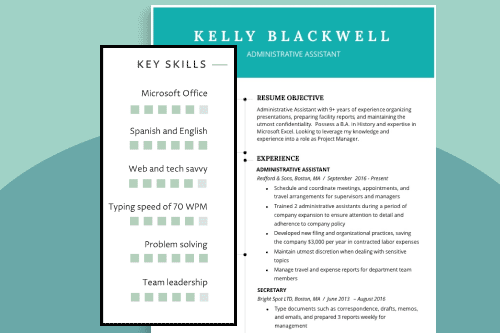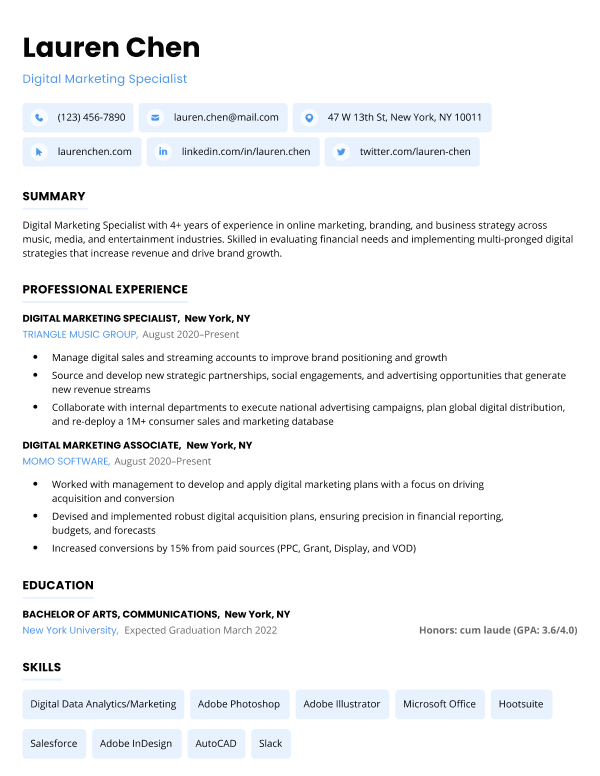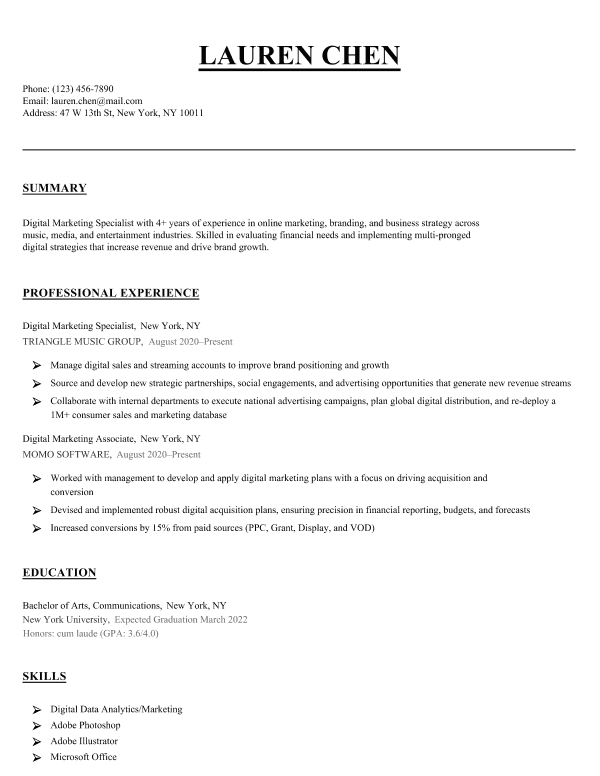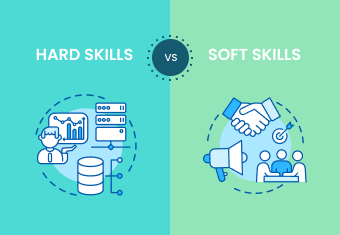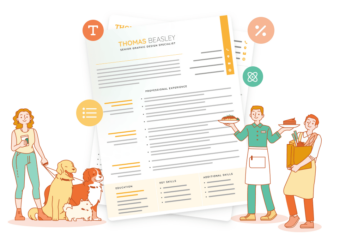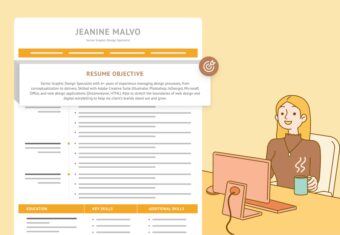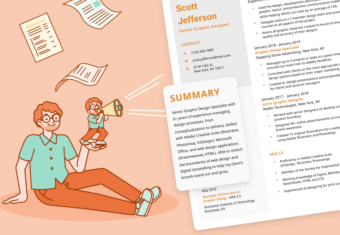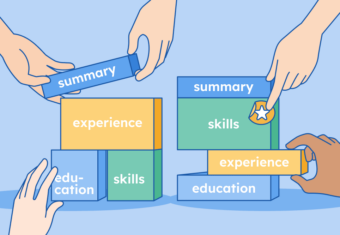When you create your resume skills section, you have the option of specifying what your skill levels are for each ability. In this article we’ll cover everything you need to know about skill levels on your resume, including:
Our free-to-use resume builder can make you a resume in as little as 5 minutes. Just pick the template you want, and our software will format everything for you.
What are skill levels for a resume?
Skill levels for a resume are metrics that help display your proficiency in each specific skill you list on your resume. There are various methods you can use to quantify and display your skill levels. For example, you could use categories, percentages, or bar graphs.
Using skill levels can be a great way to demonstrate your unique qualifications to an employer and convince them that you’re a great fit for the role.
Here’s an example of how to write a resume with skill levels:
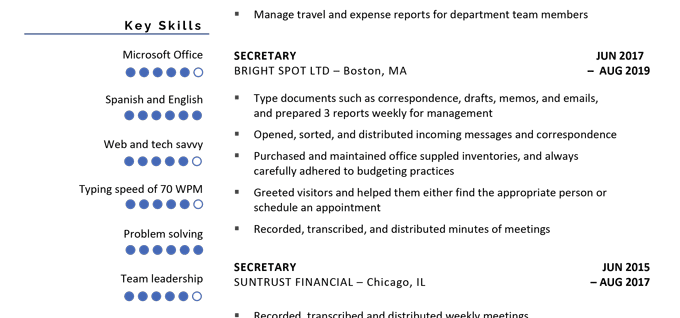
Should you use a skill level scale on your resume?
While skill levels can work to enhance some resumes, they can look awkward on others. That’s because using skill levels isn’t suitable for every type of skill.
For example, listing that your proficiency in HTML is “60%” gives employers an idea that you have an intermediate knowledge of HTML. However, saying that your communication skills are “70%” makes less sense because a skill like communication can’t be quantified.
Skill levels work best in industries that are more heavily reliant on technical skills. These hard skills are much more realistically quantifiable than soft skills like communication or people skills.
If you’re listing mostly soft skills, it’s best to stick with a traditional list of your resume skills.
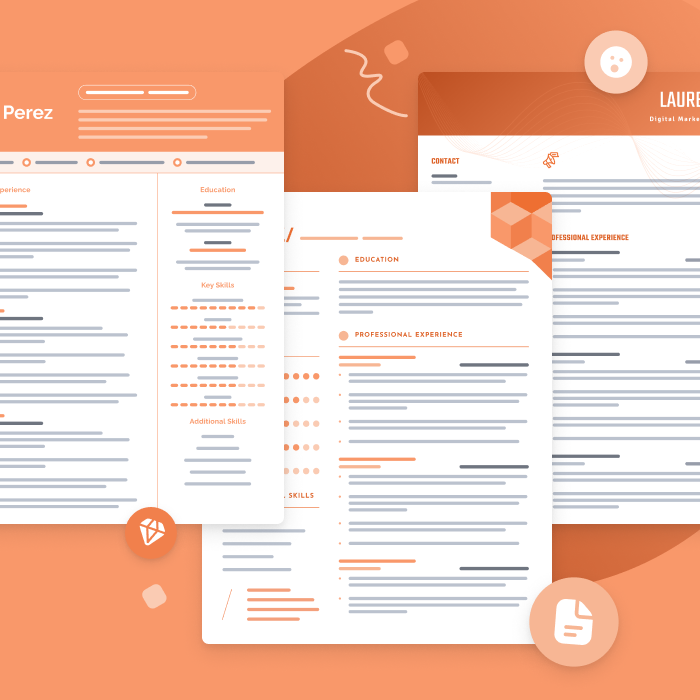
The best resume templates for 2024
One of the best ways to make your resume is by filling out one of our free resume templates. All our templates are designed by experts and free to download for Microsoft Word or Google Docs.
How to demonstrate your levels of proficiency on a resume
Before deciding how to display your skills, first choose the skills that you want to quantify and how you’re going to quantify them.
1. Determine your skill proficiency levels
When putting skill levels on your resume, you want to make sure you’re using a consistent scale to measure your proficiency.
Here’s a basic scale for listing skills on your resume:
1. Beginner: suggests that you have some basic knowledge of a practice, but need further training and guidance to become skilled.
2. Intermediate: at the intermediate level, you have a solid knowledge base but still need further practice and some supervision or guidance, particularly when performing more complex tasks or challenges.
3. Proficient: when you’re proficient in a skill, you can work independently on projects, completing them efficiently and to a high standard. You’re now equipped to deal with more complex tasks and have confidence in your abilities.
4. Advanced: at the advanced level, you have complete mastery of a skill and great depth of knowledge. You’re able to practice your skill with ease, as well as teach and train others to become more proficient.
2. Choose how to display proficiency levels for your resume
Once you know how to define each of your skills, you can choose the best way to display them on your resume. There are many different options, depending on how creative you want to be.
Here are four ways to display resume skill levels:
1. Use skill level categories
There are many different ways you can categorize your skills if you have the space on your resume. One option is to have a specialized skill list as well as a standard skills list. You can give it whatever name is most appropriate, for example “technical skills”, “advanced skills” or “specialized skills”.
Here is an example of what that might look like:
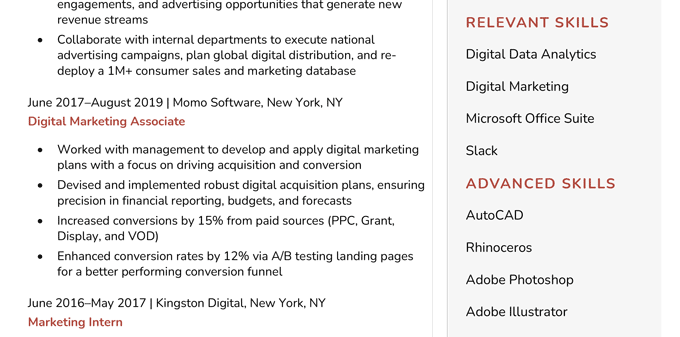
You can also use the categories of beginner, intermediate, proficient and advanced (although consider leaving off your beginner skills unless they’re highly relevant or you’re starting off your career).
Here’s an example of how you can format these categories:
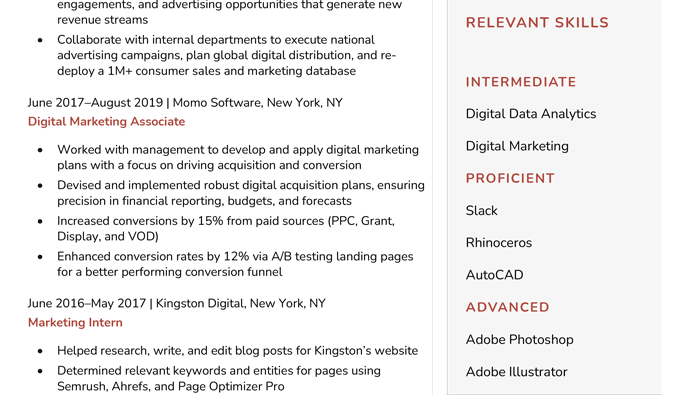
For examples of how to list skill levels on your resume, watch our video below where our career expert Eva provides the tips and tricks you need:
2. Use a graphic visualization
If you’re applying for work in a creative field and want to stand out, consider using graphics to communicate your skill levels.
If you work in a creative field, using a visual resume or an infographic resume can be a great way to show off your skills to potential employers.
Here are a few examples of graphics you can use in your skills section:
Skill bars
Skill bars are simple graphics that show your proficiency in a specific skill using a horizontal bar with a scale. The more proficient you are in each skill, the more filled-in the bar should be.
Skill bars are ideal for providing a general idea of how you evaluate your skills and adding a nice visual element to your resume.
A skills bar can take a few different forms, but will generally look something like this:
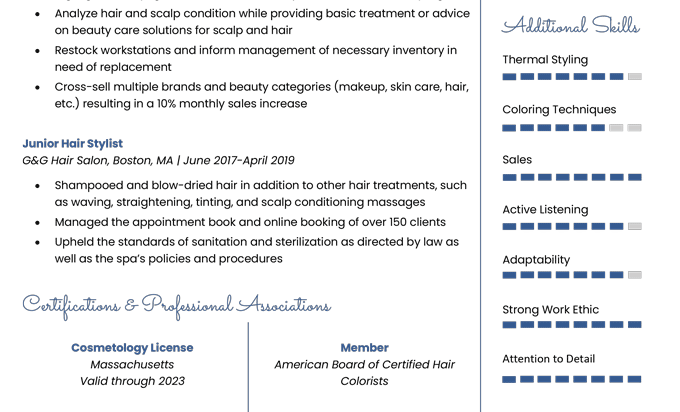
Skill level bar graph
Using a bar graph means you can add another axis to provide the employer with more specific information about your skill level. This method is similar to using categories, but is more visually engaging.
Here’s an example of a skills level bar graph on a resume:

Wheel chart
When using a wheel chart, you have to divide it between different skills, which means you can’t evaluate them all on an individual level, but rather as a whole.
Because of this, a wheel chart can be a more useful way to visually represent your main job duties in a role or what skills you employ the most in your role.
Here’s an example of the soft skills used by an employee in their current position presented in a wheel chart:
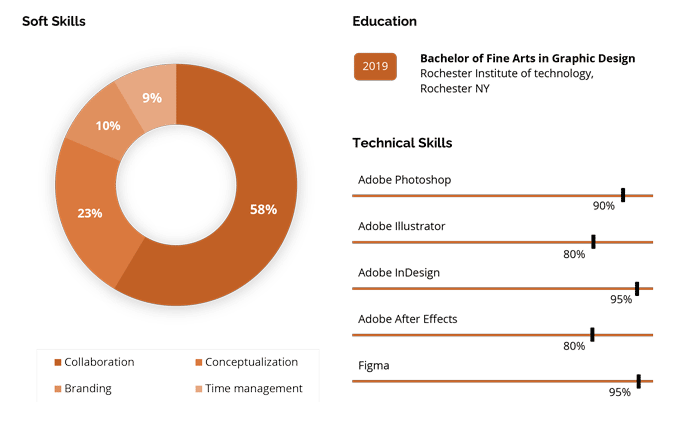
3. Include percentages
If you have a set of criteria in mind for your skill levels and you want to get specific, you can include percentages along with your skill bars.
This way, employers know exactly what level you think your abilities are at and what areas you might need more training in.
Here’s an example of a skills bar that includes percentages:
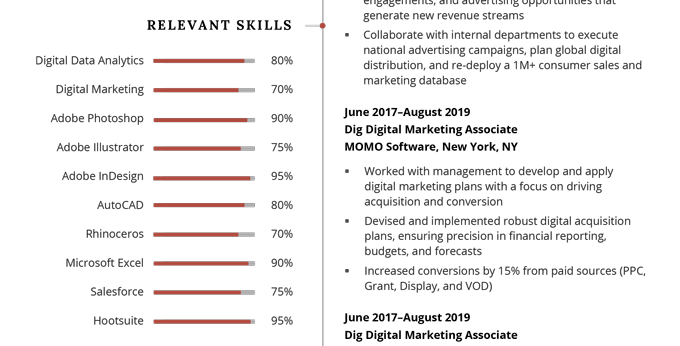
Click to rate this article
4.6 Average rating


